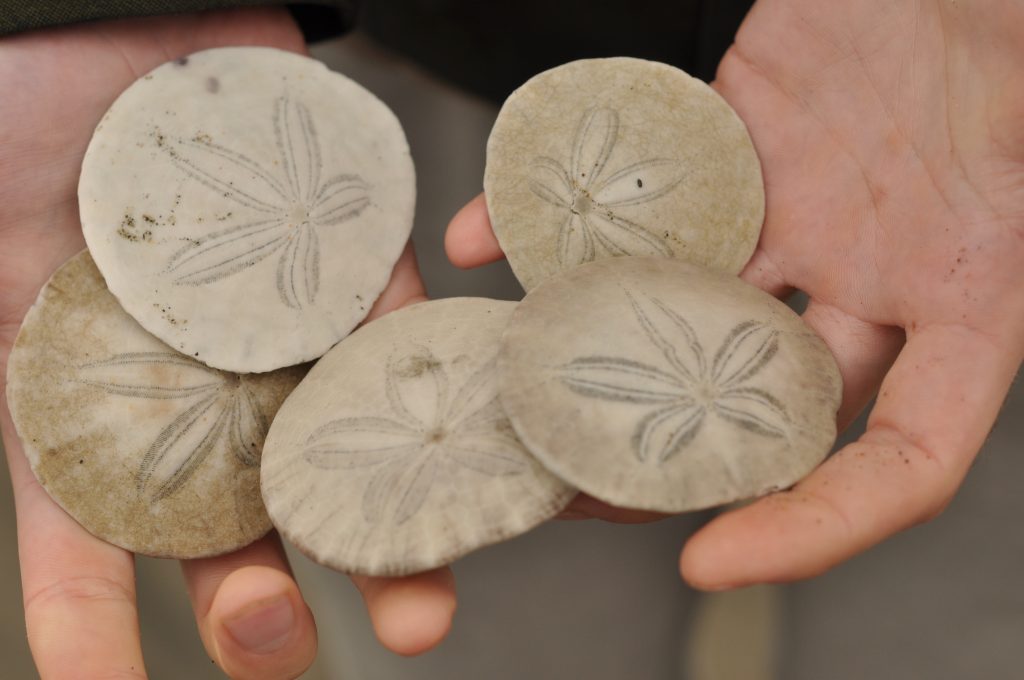What Is an Animal?
What is an animal? Take a moment to think about it. Without doubt your dog and cat are animals, as are the birds singing out your window. What about an earthworm? Or a flea? Certainly they are. Have you ever walked along the beach and spotted a jellyfish or picked up a sand dollar? They are also animals. What do all of these creatures have in common, and what sets them apart from other living organisms? What might the very first animals have looked like, and when did they live? Naturalists have pondered these questions for millennia.
Aristotle (384–322 B.C.) was among the first to characterize and organize living organisms by assessing their similarities and differences. Aristotle’s efforts in biology—to “find the Forms in nature”—came later in his life, after his initial studies in logic, rhetoric, ethics, politics, metaphysics, physics, and psychology. He described nearly 500 organisms, conducted dozens of dissections, and considered carefully the works of his naturalist contemporaries and predecessors. These studies were the foundation for his volumes The History of Animals, On the Parts of Animals, and On the Generation of Animals.
In The History of Animals, Aristotle identified three categories of animate objects (i.e., “those objects subject to generation and decay”)—plants, animals, and humans. He distinguished animals from plants by animals’ ability to move or show sensitivity in response to stimuli, and he differentiated humans from animals by humans’ capacity for reason and recollection. Aristotle held to the view that each kind of organism is a distinct, unchanging type, unconnected biologically to other types—this despite the fact that he acknowledged an apparent hierarchy of living creatures, from more primitive to more complex forms, and noted similarities between groups of organisms such as land animals and cetaceans (whales, dolphins, and porpoises). The idea of life changing over time and from one form to another—the concept of evolution—would not be developed for more than two thousand years.
The task of classifying living things and understanding the relationships among them has defined the work of myriad natural scientists since Aristotle’s time. Today, researchers rely on a number of features to identify and classify animals (also known as metazoans). Most animals are heterotrophs—meaning they depend on other organisms for energy and nutrients—and have a symmetrical body plan (bilateral or radial), specialized tissues or organs, and an extracellular (outside the cell) matrix that provides structure for their bodies. But even these traits are not always sufficient or reliable for identifying what is and isn’t an animal.
For example, fungi, which are not animals, are heterotrophs, and sponges, which are animals, lack true tissues and organs. And, in the last decade, scientists have identified photosynthetic animals, among them a sea slug and a salamander, that get at least some of their energy and nutrients via sunlight due to a symbiotic (mutually beneficial) relationship with algae. Researchers use knowledge of these characteristics along with additional sources of information, such as genetics, to properly classify organisms; however, this approach becomes more challenging when the organisms being studied are more than half a billion years old.
“Puzzles mount upon puzzles the more we consider details …”
—Stephen Jay Gould
The oldest fossils that scientists agree are metazoans date to the Paleozoic Era, specifically the Cambrian Period (540–485 million years ago). These fossils are evidence of multicellular organisms with structure, or “hard parts.” The famous Burgess Shale in the Canadian Rockies preserves diverse fossilized remains of such creatures.
Recent research incorporating both fossil and molecular-clock (genetic) data suggests the first metazoans could have evolved even before the start of the Paleozoic Era—in the Precambrian, more than 540 million years ago. In the last half century, Precambrian deposits have revealed many fossilized organisms, but none of them are definitively metazoan, although some scientists argue that they are. Interestingly, such a confirmation would validate Charles Darwin’s speculation that the Precambrian would one day reveal a record of the origins of complex life.
So it’s still not settled what features defined the very first animals or exactly when they evolved. In fact, in the nearly two and a half millennia since Aristotle tried to define his types, the boundaries between different life forms have become less well-defined, not more. And if nothing else, this is evidence that all life on Earth—from bacteria to oak trees, algae to elephants, sand dollars to humans—is connected.
































